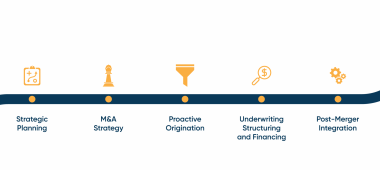Whether you plan to sell your business, bring in new partners or seek growth capital, you need to know the value of your company. That means taking a realistic perspective, rather than setting your expectations too high.
When preparing a formal valuation, an accountant is likely to use one or more academic methods for determining your business’ value:
- A cost approach considers your cost to build the company and the replacement cost in order to arrive at a value. This generally always yields the lowest values and is considered the least beneficial method for a seller.
- A discounted cash flow (DCF) method estimates future cash flows and adjusts for the length of time. While technically correct, this approach can be divorced from market realities because projections of future performance and the appropriate discount rate are open to interpretation.
- A relative value approach takes into account the value of similar companies and prior relevant transactions. Because the market changes over time, it is important to use the most recent comparable transactions as possible. It is very similar to valuing a house– you look at the most recent sales of nearby houses and adjust based upon differences (number of bedrooms, square footage, etc.). However, finding reliable data for small private companies can often be challenging.
The Multiple is What Matters
In the real world, nearly all transactions are valued using the relative value method based on a multiple of the company’s earnings. For instance, if your business has $2 million in annual profits, and similar companies sold recently for five times earnings, the value of your business would be in the area of $10 million.
Multiples vary by industry, and tend to be higher in sectors with high growth potential or lower underlying risk levels.
Having analyzed hundreds of lower middle market transactions, we’ve observed that the vast majority of businesses sell within the range of four to six times earnings, with a multiple of five most common for an average business that grows slowly.
Why? A five-times multiple mathematically coincides with a 20 percent return on investment, which is what most investors are expecting to receive to compensate themselves for the higher levels of risk relative to public investment alternatives.
Many things can affect whether you’re at the low or high end of the spectrum:
- Historical earnings, which serve as a proxy for what a buyer could expect in future earnings. But if past earnings are not reflective of the sustainable earning capacity of the business, the multiple will be impacted.
- Businesses generating stable recurring revenue command much higher multiples than project-based revenue.
- Higher-margin companies typically command higher multiples, as this is assumed to provide greater pricing power and resiliency.
- Room for significant cost savings or synergies with strategic buyers can generate higher multiples.
- A highly competitive process with more potential buyers generally results in a full price.
- Urgency to sell versus your ability to be patient to wait for the best offers.
Regardless of your long-term goals, it’s a good idea to take action to improve your business and its profitability levels. Maximizing your company’s potential by increasing its performance or mitigating key risks adds value regardless of whether you choose to sell or not. Finally, always remember that a company is only as valuable as the price someone is willing to pay for it.
















1 Comment